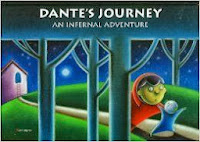It takes a whole heap of self-esteem to be a really
effective villain.
In the 1970s, a dreadful myth was perpetrated by the likes
of Roy Baumeister*. He maintained the worst thing that parents can inflict on a
child is low self-esteem. Luckily, authors have never been led astray. They,
like me, have recognised that the true villains of the world have excessive self-esteem.
Sometimes it manifests itself as truly despicable villains
in the mould of Lemony Snicket's Count Olaf. I include Lian Tanner’s Flugleman
in this group. In fictitious schools, the villain is often the beautiful
bullying queen bee or her male counterpart, the jock, who delight in making it
hard for our sensitive/bookish/nerdy/lunch-in- the-library protagonists. Think of
pushy manipulative Holly in Fiona Wood’s Wildlife.
These villains never seem to suffer self-doubt.
 Of course modern psychology has moved on. It is now
known bullies do not have low self-esteem. It is now known that there is
no relationship between the view that individuals hold of themselves and their
peers’ evaluations. It also cannot be presumed that those with low literacy
skills have low self-esteem but we do know those who enjoy reading understand
themselves and the world better whether they aim to or not.
Of course modern psychology has moved on. It is now
known bullies do not have low self-esteem. It is now known that there is
no relationship between the view that individuals hold of themselves and their
peers’ evaluations. It also cannot be presumed that those with low literacy
skills have low self-esteem but we do know those who enjoy reading understand
themselves and the world better whether they aim to or not.
Our heroes are all the more heroic because they do
show humility and our villains more hateful because they do not. And is not it
much more enjoyable when villains get their comeuppance?
Richard Pickup







